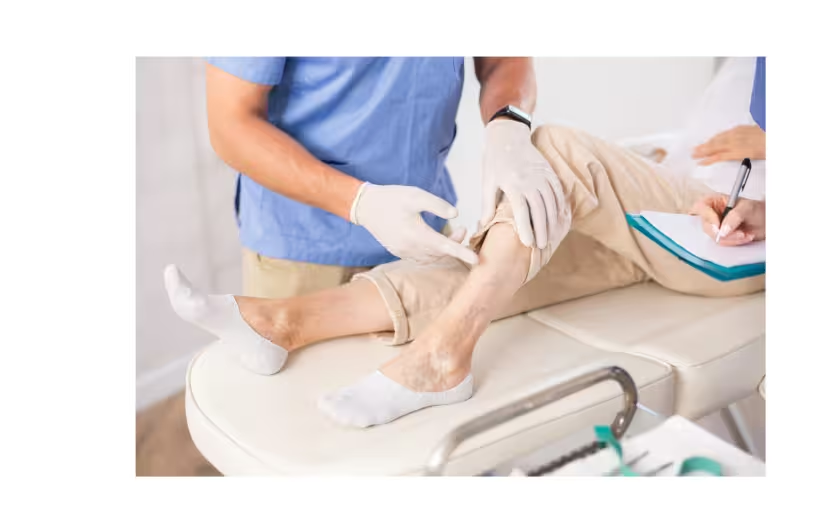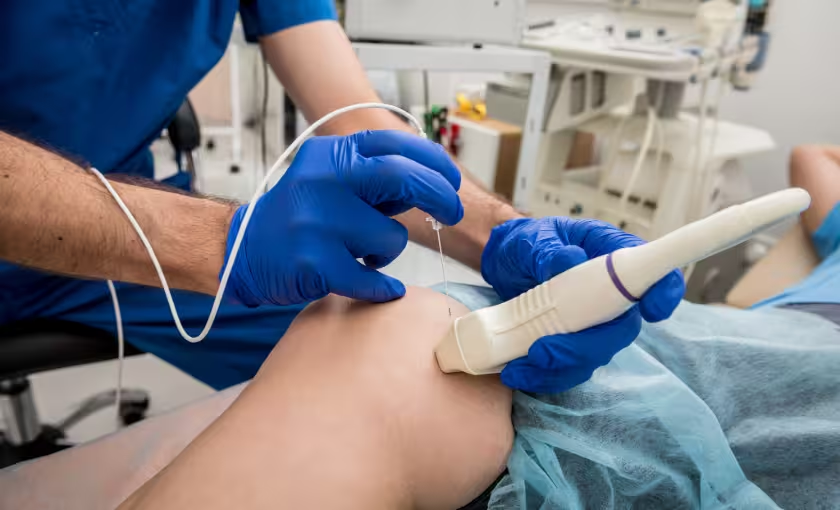Insurance Coverage and Payment Options: Making Vein Treatment Accessible and Affordable

Understanding insurance coverage and payment options for vein treatments is crucial for making informed decisions about vascular health care and ensuring that financial considerations don't prevent individuals from receiving the treatment they need. Navigating the complexities of insurance coverage, understanding what treatments are typically covered, and exploring available payment options empowers patients to access the vein care that can significantly improve their quality of life.
The landscape of insurance coverage for vein treatments has evolved significantly over the years, with many insurance plans now recognizing the medical necessity of treating venous insufficiency and related conditions. However, coverage can vary widely among different insurance providers and plans, making it important for patients to understand their specific benefits and how to maximize their coverage for vein treatments.
BASS Vein Center's extensive experience working with various insurance providers and helping patients navigate coverage options has provided valuable insights into how to optimize insurance benefits and explore alternative payment solutions when needed. This expertise helps patients understand their options and make informed decisions about their vein care without financial barriers preventing necessary treatment.
Understanding Insurance Coverage for Vein Treatments
Insurance coverage for vein treatments is primarily determined by medical necessity, with most insurance plans covering treatments for conditions that cause symptoms or pose health risks while having more limited coverage for purely cosmetic procedures. Understanding how insurance companies evaluate medical necessity helps patients understand what treatments are likely to be covered.
Medical necessity criteria typically require documentation of symptoms such as pain, swelling, heaviness, fatigue, or other functional impairments caused by venous insufficiency. Insurance companies may also require evidence that conservative treatments have been tried without adequate success before approving more advanced interventions.
Diagnostic testing requirements are often part of the insurance approval process, with duplex ultrasound examinations typically required to document the presence and severity of venous insufficiency. These tests provide objective evidence of venous dysfunction that supports the medical necessity of treatment.
Conservative treatment trials may be required by insurance companies before approving advanced treatments, with patients typically needing to demonstrate that they have tried compression therapy, lifestyle modifications, and other conservative measures for a specified period without adequate symptom relief.
Documentation requirements for insurance coverage include detailed medical records, symptom documentation, diagnostic test results, and evidence of conservative treatment trials. Proper documentation is crucial for obtaining insurance approval and avoiding claim denials.
Coverage variations among insurance plans can be significant, with some plans providing comprehensive coverage for vein treatments while others have more restrictive policies. Understanding the specific terms of individual insurance plans helps patients know what to expect regarding coverage and out-of-pocket costs.
Prior authorization requirements are common for many vein treatments, with insurance companies requiring approval before procedures can be performed. Understanding the prior authorization process helps ensure that necessary approvals are obtained before treatment scheduling.
Types of Treatments Typically Covered
Different types of vein treatments have varying levels of insurance coverage, with medically necessary procedures generally having better coverage than those considered primarily cosmetic. Understanding which treatments are typically covered helps patients plan for their care and understand potential costs.
Endovenous ablation procedures, including radiofrequency ablation and laser ablation, are typically well-covered by insurance when performed for medically necessary reasons such as symptomatic venous insufficiency. These procedures have strong evidence supporting their effectiveness and are considered standard treatments for venous insufficiency.
The coverage for endovenous ablation usually includes the procedure itself, necessary diagnostic testing, and follow-up care, though specific coverage details can vary among insurance plans. Patients should verify their specific benefits and any requirements for prior authorization.
Sclerotherapy coverage varies depending on the size and type of veins being treated, with treatment of larger varicose veins more likely to be covered than treatment of small spider veins. Insurance companies typically consider sclerotherapy for larger veins medically necessary when associated with symptoms.
Ambulatory phlebectomy procedures are often covered when performed for symptomatic varicose veins that meet medical necessity criteria. This surgical procedure for removing large varicose veins is generally well-accepted by insurance companies when appropriate documentation is provided.
VenaSeal closure procedures may have varying coverage depending on the insurance plan and the specific circumstances of the case. As a newer treatment option, coverage policies for VenaSeal may be evolving, and patients should verify coverage with their specific insurance provider.
Compression therapy is typically covered by insurance when prescribed for medical conditions such as venous insufficiency, lymphedema, or post-surgical care. Coverage may include both the initial fitting and replacement garments as needed.
Understanding Insurance Terminology
Navigating insurance coverage requires understanding common insurance terminology and how different terms affect coverage and out-of-pocket costs. Familiarity with insurance language helps patients better understand their benefits and make informed decisions about their care.
Deductibles represent the amount patients must pay out-of-pocket before insurance coverage begins, with high-deductible plans requiring significant patient payment before insurance benefits apply. Understanding deductible amounts helps patients plan for the financial aspects of their care.
Copayments are fixed amounts that patients pay for specific services, such as office visits or procedures, regardless of the total cost of the service. Knowing copayment amounts helps patients understand their immediate out-of-pocket costs for different types of appointments and treatments.
Coinsurance represents the percentage of costs that patients are responsible for after meeting their deductible, with common coinsurance rates ranging from 10% to 30% of the total cost. Understanding coinsurance helps patients estimate their portion of treatment costs.
Out-of-pocket maximums represent the maximum amount patients will pay in a given year, after which insurance covers 100% of covered services. Knowing the out-of-pocket maximum helps patients understand their maximum financial exposure for the year.
In-network versus out-of-network providers significantly affect coverage and costs, with in-network providers typically offering better coverage and lower out-of-pocket costs. Understanding network status helps patients choose providers that optimize their insurance benefits.
Prior authorization requirements mean that insurance approval must be obtained before certain treatments can be performed, with failure to obtain prior authorization potentially resulting in claim denials. Understanding when prior authorization is required helps avoid coverage problems.
Maximizing Insurance Benefits
Understanding how to maximize insurance benefits for vein treatments can help patients reduce their out-of-pocket costs and ensure that they receive the full value of their insurance coverage. Strategic planning and proper documentation can significantly impact the financial aspects of vein care.
Timing considerations for treatment can affect insurance benefits, with some patients benefiting from scheduling treatments early in the year after meeting deductibles or late in the year when approaching out-of-pocket maximums. Understanding how timing affects costs helps optimize insurance benefits.
Combining treatments when appropriate can help maximize insurance benefits by addressing multiple issues during single treatment sessions or coordinating treatments to optimize coverage. However, treatment decisions should always be based primarily on medical appropriateness rather than insurance considerations.
Proper documentation and communication with insurance companies can help ensure that claims are processed correctly and that coverage decisions are based on complete and accurate information. Working with experienced providers who understand insurance requirements helps optimize coverage.
Appeals processes are available when insurance claims are denied, and understanding how to appeal coverage decisions can help patients obtain coverage for medically necessary treatments that may have been initially denied. Persistence and proper documentation can often result in successful appeals.
Flexible spending accounts and health savings accounts can help patients pay for out-of-pocket costs associated with vein treatments using pre-tax dollars, effectively reducing the cost of care. Understanding how to use these accounts helps maximize their benefits.
Coordination of benefits becomes important for patients with multiple insurance plans, such as those covered by both employer insurance and Medicare. Understanding how different plans coordinate can help optimize total coverage and minimize out-of-pocket costs.
Alternative Payment Options
When insurance coverage is limited or unavailable, various alternative payment options can help make vein treatments more accessible and affordable. Understanding these options helps ensure that financial considerations don't prevent necessary treatment.
Payment plans offered by many vein treatment providers allow patients to spread the cost of treatment over time through monthly payments, making expensive procedures more manageable financially. These plans often offer flexible terms and may not require credit checks or interest charges.
Medical financing companies specialize in providing loans for healthcare expenses, including vein treatments, with various terms and interest rates available. These financing options can provide immediate access to treatment while allowing for manageable monthly payments.
Credit card options, including medical credit cards designed specifically for healthcare expenses, can provide immediate payment for treatments with various promotional financing terms. Some medical credit cards offer interest-free periods for qualified applicants.
Cash payment discounts are often available from providers for patients who pay for treatments upfront, with discounts typically ranging from 5% to 15% of the total treatment cost. These discounts can provide significant savings for patients who can afford to pay in full.
Package pricing for multiple treatments or comprehensive care plans can provide cost savings compared to individual treatment pricing. Providers may offer bundled pricing for patients who need multiple procedures or ongoing care.
Employer benefits programs may include flexible spending accounts, health savings accounts, or other benefits that can be used for vein treatments. Understanding available employer benefits helps maximize their value for healthcare expenses.
Medicare and Medicaid Coverage
Medicare and Medicaid coverage for vein treatments follows specific guidelines and requirements that differ from private insurance coverage. Understanding these programs helps eligible patients navigate their benefits and access necessary care.
Medicare coverage for vein treatments is available when treatments meet medical necessity criteria and are performed by Medicare-approved providers. Medicare typically covers medically necessary vein treatments but has limited coverage for cosmetic procedures.
Medicare Part B covers outpatient vein treatments when performed in physician offices or outpatient facilities, while Medicare Part A may cover treatments performed in hospital settings. Understanding which part of Medicare covers different treatments helps patients understand their benefits.
Medicare Advantage plans may offer different coverage for vein treatments compared to traditional Medicare, with some plans providing enhanced benefits or different coverage criteria. Patients with Medicare Advantage should verify their specific plan benefits.
Medicaid coverage for vein treatments varies by state, with some states providing comprehensive coverage while others have more limited benefits. Patients with Medicaid should check with their state program to understand available benefits.
Medicare supplement insurance can help cover the gaps in Medicare coverage, including deductibles, coinsurance, and other out-of-pocket costs associated with vein treatments. Understanding supplement coverage helps patients plan for their total costs.
Dual eligibility for both Medicare and Medicaid can provide comprehensive coverage for vein treatments, with the two programs coordinating to minimize out-of-pocket costs for eligible patients.
Working with Insurance Companies
Successfully navigating insurance coverage for vein treatments often requires effective communication and collaboration with insurance companies. Understanding how to work with insurers helps ensure that claims are processed correctly and that coverage decisions are fair and appropriate.
Pre-authorization processes require submitting detailed information about proposed treatments to insurance companies for approval before procedures are performed. Understanding what information is required and how to submit it properly helps ensure timely approval.
Documentation requirements for insurance submissions typically include medical records, diagnostic test results, symptom documentation, and evidence of conservative treatment trials. Providing complete and accurate documentation helps support coverage decisions.
Communication strategies with insurance companies include understanding who to contact for different types of questions, how to escalate issues when necessary, and how to document all communications for future reference. Effective communication helps resolve coverage issues more efficiently.
Appeals processes are available when insurance claims are denied, with specific procedures and timelines that must be followed. Understanding the appeals process and working with experienced providers can help overturn inappropriate denials.
Provider networks and referral requirements can affect coverage and costs, with some insurance plans requiring referrals from primary care physicians or restricting coverage to specific provider networks. Understanding these requirements helps avoid coverage problems.
Claim submission and follow-up processes require attention to detail and persistence to ensure that claims are processed correctly and that any issues are resolved promptly. Working with experienced billing staff helps optimize claim processing.
Cost Considerations and Planning
Understanding the potential costs associated with vein treatments and planning for these expenses helps patients make informed decisions about their care and avoid financial surprises. Comprehensive cost planning includes both direct treatment costs and associated expenses.
Treatment cost ranges vary widely depending on the type and extent of treatment needed, with simple sclerotherapy sessions costing significantly less than complex endovenous ablation procedures. Understanding typical cost ranges helps patients plan for their expenses.
Factors affecting costs include the complexity of the condition, the number of treatments needed, the specific procedures required, and the geographic location of treatment. Understanding these factors helps patients estimate their total treatment costs.
Hidden costs may include diagnostic testing, follow-up appointments, compression garments, and time off work for treatment and recovery. Planning for these additional costs helps avoid financial surprises.
Insurance verification processes help patients understand their specific coverage and out-of-pocket costs before beginning treatment. Thorough verification helps avoid unexpected expenses and allows for proper financial planning.
Payment timing considerations include understanding when payments are due, whether payment plans are available, and how insurance reimbursements are processed. Planning payment timing helps manage cash flow and financial planning.
Cost-benefit analysis of treatment options helps patients understand the long-term value of vein treatments, including potential savings from reduced symptoms, improved quality of life, and prevention of complications.
Special Circumstances and Considerations
Certain special circumstances may affect insurance coverage and payment options for vein treatments, requiring additional planning and consideration to ensure appropriate access to care.
Workers' compensation coverage may apply when vein problems are related to occupational factors, such as prolonged standing or sitting required by work duties. Understanding workers' compensation benefits helps ensure appropriate coverage for work-related conditions.
Auto insurance coverage may apply when vein problems result from motor vehicle accidents, with personal injury protection or medical payments coverage potentially covering treatment costs. Understanding auto insurance benefits helps access appropriate coverage.
Travel insurance considerations become important for patients who travel for treatment or who develop vein problems while traveling. Understanding travel insurance coverage helps ensure access to care when away from home.
International patients may have different insurance and payment considerations, with some international insurance plans providing coverage for treatment in the United States while others require cash payment or alternative arrangements.
Emergency treatment coverage may differ from elective treatment coverage, with insurance plans typically providing better coverage for emergency situations such as blood clots or bleeding from varicose veins.
Experimental or investigational treatments may have limited or no insurance coverage, requiring patients to pay out-of-pocket or seek alternative funding sources for access to cutting-edge treatments.
Financial Assistance Programs
Various financial assistance programs may be available to help patients access vein treatments when insurance coverage is limited or when financial hardship makes treatment unaffordable. Understanding these programs helps ensure that financial barriers don't prevent necessary care.
Provider-based assistance programs are offered by many vein treatment centers to help patients with financial hardship access necessary care. These programs may include sliding fee scales, charity care, or payment assistance based on income and financial need.
Nonprofit organizations may provide grants or assistance for medical treatments, including vein care, for patients who meet specific criteria. Researching available nonprofit assistance helps identify potential funding sources.
Government assistance programs beyond Medicare and Medicaid may be available in some areas, including state-funded healthcare programs or local assistance programs for medical care.
Pharmaceutical company assistance programs may be available for patients who need specific medications related to their vein care, such as blood thinners or other medications used in treatment protocols.
Community resources, including local charities, religious organizations, and community foundations, may provide assistance for medical expenses for residents in need.
Crowdfunding platforms have become increasingly popular for raising funds for medical expenses, allowing patients to seek support from friends, family, and community members for necessary treatments.
Planning for Long-Term Care
Vein problems often require ongoing management and periodic treatment, making it important to plan for the long-term financial aspects of vascular care. Understanding how to plan for ongoing care helps ensure continued access to necessary treatments.
Maintenance treatment costs may include periodic follow-up appointments, diagnostic testing, compression garment replacement, and treatment of new or recurrent vein problems. Planning for these ongoing costs helps ensure continuity of care.
Insurance changes over time, including job changes, retirement, or changes in health status, can affect coverage for vein treatments. Understanding how insurance changes might affect coverage helps plan for continuity of care.
Health savings accounts and flexible spending accounts can be valuable tools for planning and paying for ongoing vein care expenses, allowing patients to set aside pre-tax dollars for future healthcare needs.
Preventive care investments, including compression therapy, lifestyle modifications, and regular monitoring, may help reduce long-term treatment costs by preventing progression of vein problems or development of complications.
Treatment timing strategies may help optimize insurance benefits and minimize costs over time, such as coordinating treatments with insurance benefit years or planning for major treatments when insurance coverage is optimal.
Long-term care insurance may provide coverage for some aspects of vein care, particularly if vein problems contribute to mobility limitations or other functional impairments that affect daily living activities.
Technology and Innovation in Payment
Advances in technology and changes in healthcare financing are creating new options for paying for vein treatments and managing healthcare expenses. Understanding these innovations helps patients access new tools for managing their healthcare costs.
Digital payment platforms and mobile apps are making it easier for patients to manage their healthcare expenses, make payments, and track their spending on medical care. These tools can help simplify the financial aspects of healthcare.
Telemedicine and remote monitoring technologies may help reduce the costs associated with vein care by reducing the need for in-person appointments and allowing for more efficient monitoring of treatment outcomes.
Artificial intelligence and data analytics are being used to help patients understand their insurance benefits, estimate costs, and identify the most cost-effective treatment options for their specific situations.
Blockchain technology and digital health records may help streamline insurance processing and reduce administrative costs associated with healthcare, potentially leading to lower overall treatment costs.
Subscription-based healthcare models are emerging that may provide more predictable costs for ongoing vein care and other healthcare needs, allowing patients to budget more effectively for their healthcare expenses.
Value-based care models that focus on outcomes rather than volume of services may help align provider incentives with patient outcomes and potentially reduce overall healthcare costs while improving quality of care.
Conclusion: Making Vein Care Accessible and Affordable
Understanding insurance coverage and payment options for vein treatments is essential for ensuring that financial considerations don't prevent individuals from accessing the care they need for optimal vascular health. With proper knowledge and planning, most patients can find ways to make vein treatments affordable and accessible.
The key to successfully navigating the financial aspects of vein care lies in understanding your specific insurance benefits, exploring all available payment options, and working with experienced providers who can help optimize your coverage and minimize your out-of-pocket costs.
Modern healthcare financing offers numerous options for making vein treatments accessible, from traditional insurance coverage to innovative payment plans and financing options. Understanding these options empowers patients to make informed decisions about their care without letting financial concerns compromise their health.
BASS Vein Center's expertise in working with insurance companies and helping patients navigate payment options ensures that financial barriers don't prevent patients from receiving the vein care they need. This comprehensive approach to healthcare financing helps make quality vein care accessible to patients with diverse financial circumstances.
For individuals concerned about the cost of vein treatment, understanding available insurance coverage and payment options provides the foundation for making informed decisions about their vascular health care. Taking the time to explore all available options helps ensure that necessary treatment is both accessible and affordable.
Don't let concerns about cost prevent you from getting the vein care you need when comprehensive insurance and payment options can make treatment accessible and affordable. Contact BASS Vein Center today at (925) 489-1684 to learn more about insurance coverage and payment options and discover how our experienced team can help you navigate the financial aspects of your vein care to ensure you receive the treatment you need for optimal vascular health. Your journey toward better vein health shouldn't be limited by financial concerns when expert guidance and flexible payment options can make quality care accessible and affordable.
Take the First Step to Ending Annoying Varicose Vein Discomfort.






.svg)


